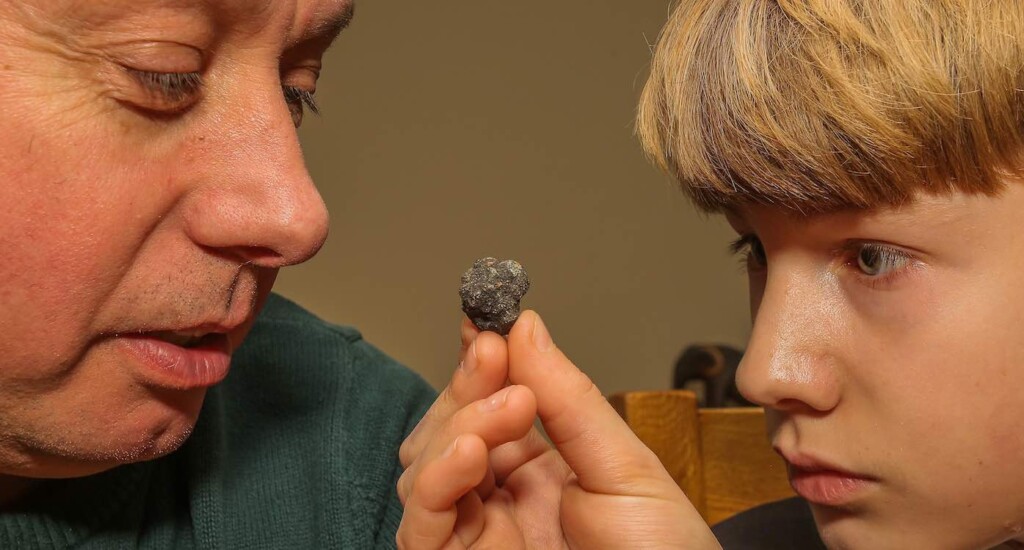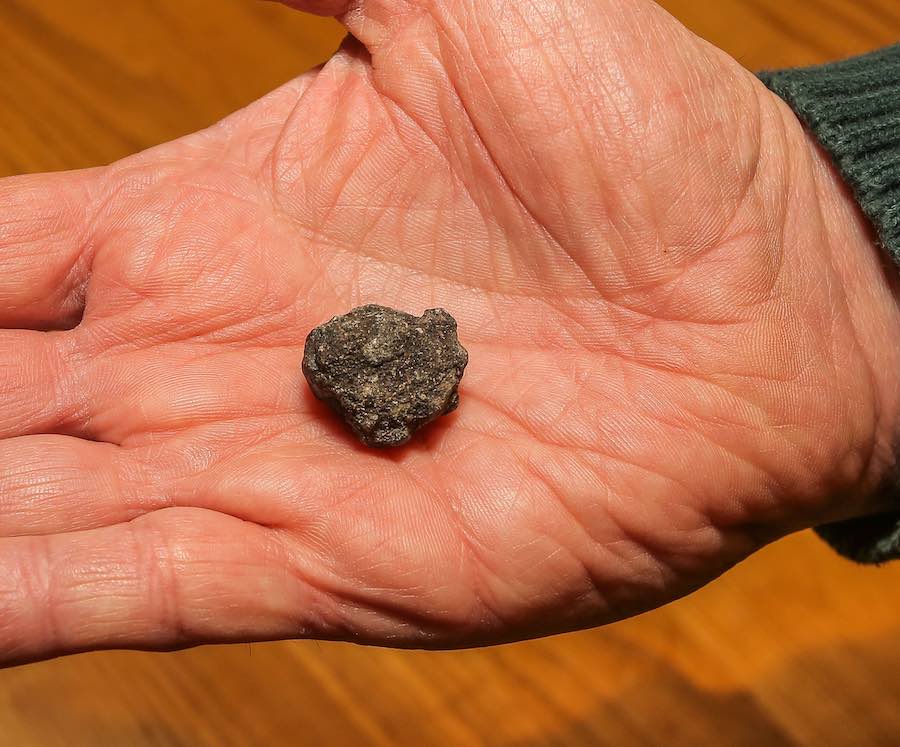When Car’s Windshield is Smashed, Clever Son Spots Nearby Rock and Discovers a Meteorite as the Culprit

A family woke up and found their car windshield with a hole in it, but their curious son soon cracked the mystery.
Paul Butler and his family were watching TV the night before when they heard a loud bang outside, but dismissed the noise as holiday fireworks and went to bed.
The next morning, they noticed the car’s window was shattered, but their 12-year-old son discovered a small black shiny rock nearby that didn’t match any of the other stones.
The eagle-eyed Nathan put a magnet next to the rock, revealing it was magnetized—a tell-tale sign the stone probably plummeted to Earth from outer space.
“I was looking around on the ground near the car and right by the front wheel was a black rock that stood out from all the others,” Nathan told SWNS news.
“I wondered if it could possibly be a meteorite but wasn’t sure until we used a magnet and researched it online.”
His 55-year-old father said it had “a strange shape” and “looked like it had been burned“.
“It is the only logical explanation for what caused the damage because it wasn’t there when the car drove into the driveway.
“The impact looks like it splintered the glass, which was inside the car and covering the dashboard and driver’s seat.”
The family took the car to a nearby repair garage in Stratford-Upon-Avon, England, where they delighted in explaining the billion-to-one cause of the damage.

How to tell if a rock is a meteorite
To identify if a rock is a meteorite, look for a dark, thin “fusion crust” on its surface, check if it’s unusually heavy for its size due to high iron content, test if it’s magnetic, and look for unusual surface indentations called “regmaglypts”.
- Density: Meteorites are usually quite heavy for their size, since they contain metallic iron and dense minerals.
- Magnetic: Since most meteorites contain metallic iron, a magnet will often stick to them. For “stony” meteorites, a magnet might not stick, but if you hang the magnet by a string, it will be attracted.
- Unusual shape: iron-nickel meteorites are rarely rounded. Instead, they have an irregular shape with unusual pits like finger prints in their surface called “regmaglypts.”
- Fusion crust: stony meteorites typically have a thin crust on their surface where it melted as it passed through the atmosphere.
According to the University of New Mexico Meteorite Museum, meteorites do NOT have the following:
– Light-colored crystals: Quartz is a common, light-colored crystal in Earth’s crust, but it is not found on other bodies in the solar system.
– Bubbles: volcanic rocks or metallic slag on Earth often have bubbles or vesicles in them, but meteorites do not.
– Streaking ability: if you scratch a meteorite on an unglazed ceramic surface, it should not leave a streak. A dense rock that leaves a black or red streak probably contains the iron minerals magnetite or hematite, respectively, neither of which are typically found in meteorites.
LOOK: Meteorite Hunter Finds Space Debris and Crafts it into Jewelry–Millions and Billions of Years Old
Nathan plans to take the space rock into Myton School in Warwick, to show off to his classmates. Meanwhile, Paul quipped, “When we found out it was about a billion-to-one chance of a meteorite hitting the car in our driveway we started buying lottery tickets.”
RELATED: Huge Meteorite Found in Antarctica–One of the Biggest Ever Recovered
SHARE THE COOL STORY With Rock or Space Lovers on Social Media…
>read more at © GoodNews
Views: 0